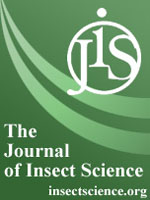Plants and plant-derived materials play an extremely important role in pest management programs. Essential oil from wood chips of Himalayan Cedar, Cedrus deodara (Roxburgh) Don (Pinales: Pinaceae), was obtained by hydrodistillation and fractionated to pentane and acetonitrile from which himachalenes and atlantones enriched fractions were isolated. A total of forty compounds were identified from these fractions using GC and GC-MS analyses. Essential oils and fractions were evaluated for insecticidal activities against second instars of the diamondback moth, Plutella xylostella L. (Lepidoptera: Yponomeutidae), using a leaf dip method. All samples showed promising larvicidal activity against larvae of P. xylostella. The pentane fraction was the most toxic with a LC50 value of 287 µg/ml. The himachalenes enriched fraction was more toxic (LC50 = 362 µg/ml) than the atlantones enriched fraction (LC50 = 365 µg/ml). LC50 of crude oil was 425 µg/ml and acetonitrile fraction was LC50 = 815 µg/ml. The major constituents, himachalenes and atlantones, likely accounted for the insecticidal action. Present bioassay results revealed the potential for essential oil and different constituents of C. deodara as botanical larvicides for their use in pest management.
How to translate text using browser tools
1 November 2011
Chemical Composition and Larvicidal Activities of the Himalayan Cedar, Cedrus deodara Essential Oil and Its Fractions Against the Diamondback Moth, Plutella xylostella
Abha Chaudhary,
Prabha Sharma,
Gireesh Nadda,
Dhananjay Kumar Tewary,
Bikram Singh

Journal of Insect Science
Vol. 11 • No. 157
November 2011
Vol. 11 • No. 157
November 2011
atlantones
biopesticide
essential oils
himachalenes
insecticidal activity




